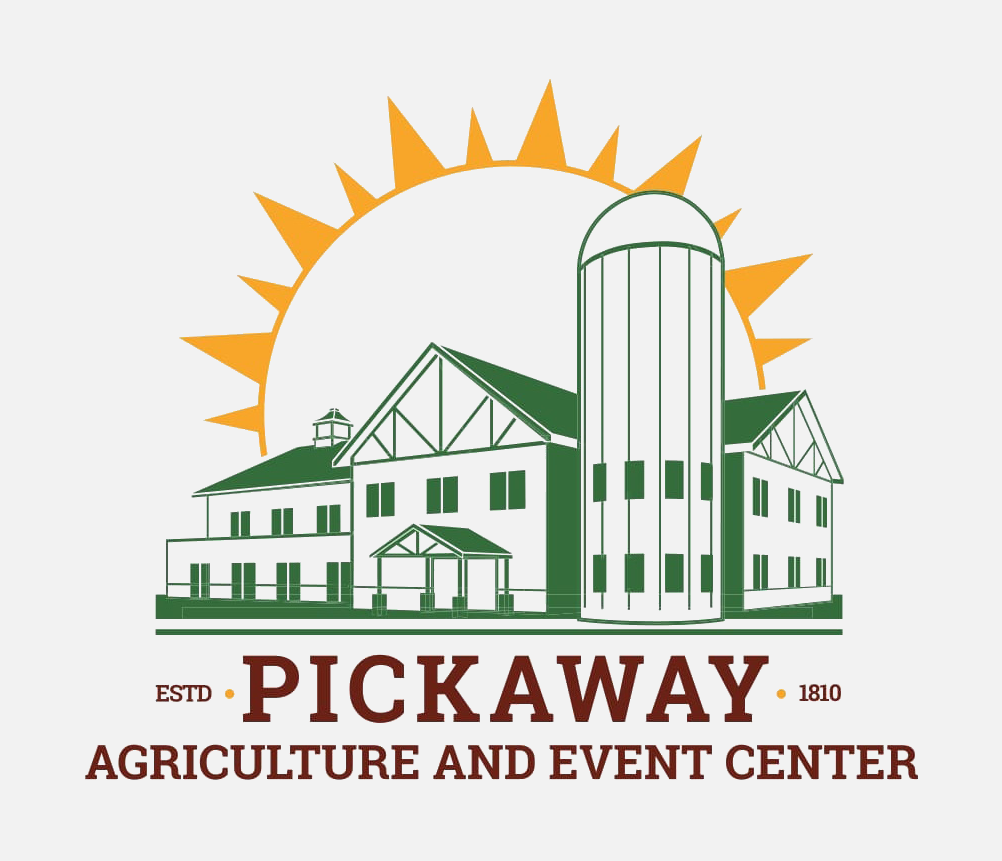

On October 15, 1834, the first Pickaway County Fair was held. There was a period of twenty years before there was another Fair. Sometime around 1858, the Pickaway County Fairgrounds Association was formed. A fair was held for several years.
Again, around 1876, a Fair Association was formed and 18 acres were purchased. In 1887, notes were sold by a corporation organized under the then laws of the State of Ohio and was named the Pickaway County Fair Company. This "new" Fair was conducted for three years.
After a period of almost sixty years, a new modern Fair was discussed. In 1944, the Pickaway County Agricultural Society was organized. A 60-acre tract of land was purchased on November 3, 1944 for $13,000. About one-fourth of this tract was located in the east edge of Circleville and the balance in the county. One day later this tract of land was given to the Pickaway County Commissioners to conduct a County Fair under the control of the Agricultural Society.
The fair was an outgrowth of a desire to furnish an area for the youth of the county to display their exhibits and projects.
In 1921, Robert Wylie came to Pickaway County as its first county agent. Rural boys and girls were starting to learn "how to make the best better" in homemaking and agricultural skills. One 4-H club goes back to 1915. The first junior fair board was organized in 1936. Girls ' 4-H arid miscellaneous projects were exhibited in the Armory and boys' animals were in tents behind the Armory. These projects were displayed during the annual Pumpkin Show. In 1943 and 1944, no Pumpkin Show was held, but a Junior Fair was held on Franklin Street and in several business buildings along that street.
By 1946, one building had been erected and housed 4-H exhibits, but the livestock was still housed in tents. There were 462 4-H members and 45 advisors recognized at the annual banquet.
A half-mile track, said to be one of the finest in Ohio, was completed just a few days before the Fair. This track was used for the first time during the September 11-14, 1946 Fair. Lights were installed to provide a well-illuminated track.
Fireworks, a full-fledged circus, harness races, open livestock exhibits, horse and pony show as well as the 4-H and FFA displays were all part of the 1946 Fair. The admission price for the Fair was forty cents over 12 and free for anyone under 12. A Fair membership was $2.
Thirty years later (1976) 4-H membership reached 2,598 which was 29.8% of all youth (ages 9-19) in Pickaway County.
In 1947, the Coliseum was built for $80,000 after 15 years of planning by the Pickaway Agricultural Society. Just before Pearl Harbor, the society was ready to let contracts for construction of the building. The war delayed the construction. After the war, contractors bid well over $100,000.
Bypassing routine procedure, the society made a contract with Raymond Rader, Circleville contractor, to handle construction supervision on a fiat fee basis. The society purchased all the materials at wholesale list, along with cash discounts and paid for all the labor, saving about $20,000 on the construction. For many years, this building served as the location of the Pickaway County basketball tournaments.
The first fair board members for the new Pickaway County fairgrounds were: Bernard Young, Forrest Short. H.A. Strous, Lewis Halderman, Russell Palm, Ned Dresbach, Ben Gordon, Ralph Fisher, and John Beryl Stevenson.
When there wasn't enough money to pay all the bills, the fair board members paid the bills from their own bank accounts. The members did this willingly because they thought it was important for the youth of Pickaway County to have a place to show their projects.
On July 1, 1948, the Pickaway County Barnes Club was formed, and secretary receipts were signed by George A. Fissell. Local horsemen were: George A. Fissell, Forrest Short, George W. Van Camp, Clarence Helvering, Merle Thornton, Emmitt Ebenhack, Art Mace, Wayne Martin, Porter Martin, Bern Shidaker, Raymond Westenbarger, Art Morris, Clarence Myers, Clarence Wolfe, Ed Shellhammer, Phil Markley, Joe Wolfe, and Robert Taylor.
The Jaycees, led by John Fissell, sponsored harness matinees each spring to help obtain money to build a grandstand along with the help of the harness club, as partners, who furnished the drivers and horses for the venture. The grandstand was erected for harness racing, horse shows, and Fair events.
Sixteen years later while Glenn McCoy was president, the biggest change was moving the fair from the valley in front of the grandstand to the hill.
Before there was a fairgrounds, 4-H members showed their animals on Franklin Street as part of the Pumpkin Show.
Sixteen years later the fairgrounds graduated from a 4-H type fair to a modern-type fair. It was decided by Glenn McCoy, president of the fair board at this time, to add more features to the fair to attract non-4-H by having musicals and mechanized entertainment.
Another change was moving the fair from August to June. It is now the first fair of the state.
The Fair has made much progress in the last 60 years. Children and grandchildren of those who had an important role in the Fair's beginning are now serving as fair board members, 4-H leaders, and supporters of the present County Fair.